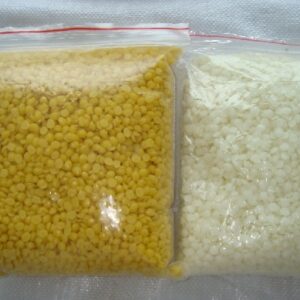Beeswax
Beeswax is the foundation of the beehive. Honeybees build their comb from beeswax and fill the geometric shape of the hexagonal cells with honey and brood.
Worker bees then secrete wax from eight special wax glands on the underside of their abdomens. The wax is exuded as a liquid but quickly cools and solidifies.
The worker bee collects the wax from her abdomen with her legs. She masticates the wax until it’s pliable and shapes it into the hexagonal cells that make up the honeycomb.
Bees are so important to our health and overall existence. Did you know that we rely on bees for nearly a third of our entire food supply?
We also greatly benefit from all the fibers, spices and medicines that come from the plants they pollinate. This produces a great appreciation for our bees, and the list continues.
Bees affect more than just our food and medicines. Honeybees are connected with several critical issues for human and environmental health, including biodiversity, food security, nutrition and sustainable land use. A world without bees would not be possible since the health of the honeybee is a critical step to sustainable agriculture.
Using beeswax is nothing new. It has been used in medicine for thousands of years.
A unique discovery was its use as dental filling. Evidence has been found of prehistoric dentistry dating back to the Neolithic times reporting a 6,500-year-old human mandible from Slovenia whose left canine crown shows the traces of a filling with beeswax.
While we don’t know all the facts, it’s thought that if the filling was done when the person was still alive, the intervention was likely aimed to relieve tooth sensitivity derived from either exposed dentine and/or the pain resulting from chewing on a cracked tooth. This is fascinating because it would provide the earliest known direct evidence of a therapeutic-palliative dental filling.
Showing the single result






